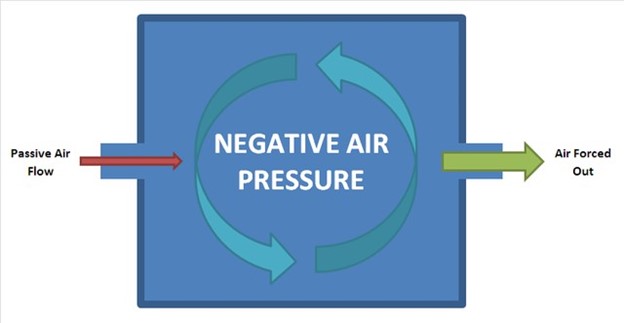A nurse in an acute care mental health facility is participating in a medication education group. The leader of the group uses a laissez-faire leadership style.
Which of the following actions should the nurse expect from the leader during the session?
The leader has group members vote on what they would like to learn about during the session.
The leader lectures about medication adverse effects to the group members.
The leader allows the group to discuss whatever they would like to regarding their medications.
The leader encourages group members to remain silent until questions are called for.
The Correct Answer is C
The leader allows the group to discuss whatever they would like to regarding their medications.
This is because a laissez-faire leadership style is characterized by minimal guidance and direction from the leader, and maximum freedom and autonomy for the followers.
The leader does not impose any rules or expectations on the group, and lets them decide how to manage their own learning and behavior.
Choice A is wrong because having group members vote on what they would like to learn about during the session is an example of a democratic leadership style, not a laissez-faire one.
A democratic leader solicits input and feedback from the group, and makes decisions based on consensus and majority rule.
Choice B is wrong because lecturing about medication adverse effects to the group members is an example of an authoritarian leadership style, not a laissez-faire one.
An authoritarian leader dictates what the group should do and how they should do it, without considering their opinions or preferences.
Choice D is wrong because encouraging group members to remain silent until questions are called for is an example of a paternalistic leadership style, not a laissez-faire one.
A paternalistic leader treats the group as if they are incapable of making their own decisions, and assumes a protective and nurturing role over them.
Normal ranges for leadership styles are not applicable in this context, as different styles may be more or less effective depending on the situation and the goals of the group.
However, some general advantages and disadvantages of each style are:
- Laissez-faire: Advantages - fosters creativity, independence, and self-motivation; Disadvantages - may lead to chaos, confusion, and lack of accountability.
- Democratic: Advantages - promotes participation, collaboration, and satisfaction; Disadvantages - may be time-consuming, inefficient, and conflict-prone.
- Authoritarian: Advantages - provides clarity, direction, and control; Disadvantages - may cause resentment, resistance, and dependency.
- Paternalistic: Advantages - creates trust, loyalty, and commitment; Disadvantages - may inhibit growth, development, and empowerment.
Nursing Test Bank
Naxlex Comprehensive Predictor Exams
Related Questions
Correct Answer is B
Explanation
The correct answer is choice b. "I can start the medication 30 minutes earlier."Choice A rationale: This is an inappropriate response, as the nurse should not adjust the time and schedule for the administration of alteplase recombinant, which is a time-sensitive medication used to treat a thrombus in the coronary artery. The administration of this medication must be done within a specific time frame to be effective.Choice B rationale: This is the correct answer. Alteplase recombinant is a thrombolytic medication used to dissolve blood clots in the coronary artery. It is a time-sensitive medication, and it is crucial to administer it as soon as possible to minimize the damage to the heart muscle. Starting the medication 30 minutes earlier is an appropriate action to include in the plan of care, as it can help ensure the medication is administered within the recommended time frame.Choice C rationale: This is an inappropriate response. Alteplase recombinant should be administered within a specific time frame, typically within 3 to 4.5 hours of the onset of symptoms. Waiting up to 2 hours after the usual schedule time to give the medication would be outside the recommended time frame and could potentially reduce the effectiveness of the treatment.Choice D rationale: This is an inappropriate response. Alteplase recombinant should be infused at a specific rate, as recommended by the manufacturer or healthcare provider. Infusing the medication at a faster rate could increase the risk of adverse effects and should not be included in the plan of care without specific instructions from the healthcare provider.
Correct Answer is C
Explanation

This is because varicella, or chickenpox, is a highly contagious disease caused by the varicellazoster virus (VZV), which can spread through the air or by direct contact with the fluid from the blisters. A negative air pressure room prevents the air from the room from circulating to other areas of the hospital, reducing the risk of transmission to other patients and staff.
Choice A is wrong because aspirin should not be given to children with chickenpox, as it can cause a serious condition called Reye’s syndrome, which affects the brain and liver. Instead, acetaminophen can be used to reduce fever.
Choice B is wrong because droplet precautions are not enough to prevent the spread of chickenpox. Droplet precautions involve wearing a mask and gloves when in close contact with the patient, but they do not prevent the virus from traveling through the air. Airborne precautions, which include a negative air pressure room and wearing a respirator, are needed for chickenpox.
Choice D is wrong because Koplik spots are not a sign of chickenpox, but of measles, another viral infection that causes a rash. Chickenpox causes an itchy rash with small, fluid-filled blisters that crust over.
Whether you are a student looking to ace your exams or a practicing nurse seeking to enhance your expertise , our nursing education contents will empower you with the confidence and competence to make a difference in the lives of patients and become a respected leader in the healthcare field.
Visit Naxlex, invest in your future and unlock endless possibilities with our unparalleled nursing education contents today
Report Wrong Answer on the Current Question
Do you disagree with the answer? If yes, what is your expected answer? Explain.
Kindly be descriptive with the issue you are facing.
